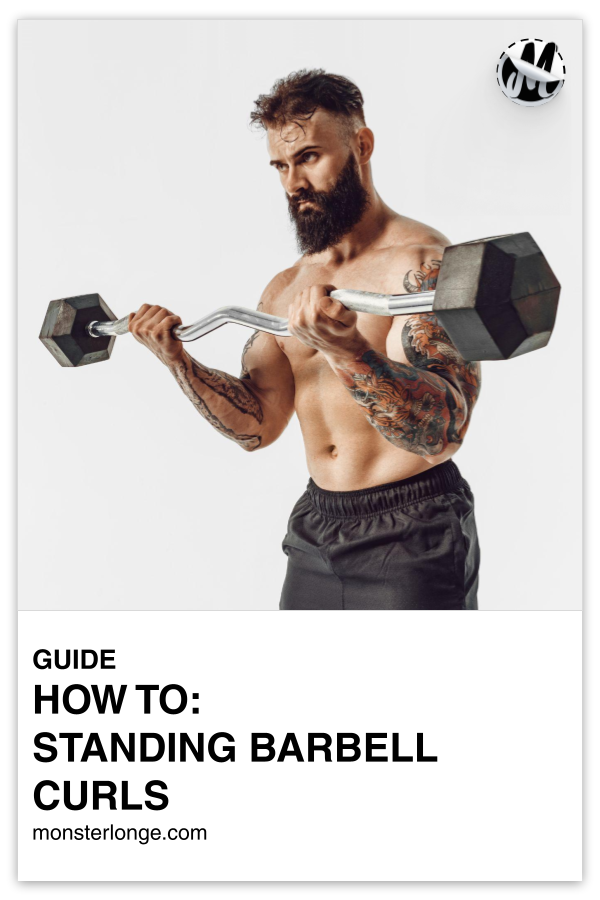
How To: Standing Barbell Curls
Dumbbell curls are a good arm exercise because they allow you to twist your wrist at the top of the movement, thus providing for a stronger biceps contraction than can be achieved with a barbell that locks your wrists in place. A more efficient route to hypertrophy is one benefit. Another point in favor of dumbbells has to do with the lessened risk of developing a muscle imbalance in the size or strength of a particular arm because there isn’t simultaneous use of your arms to lift the weight as is the case with a barbell.
Given the advantages of dumbbell curls, you’re clearly wondering why on earth would you want to do standing barbell curls or any other arm training exercise with a barbell?
Well, the answer lies in the fact that by way of both of your arms having to work together to move the load rather than independent of one another, you can overload the arms with more resistance than you can with dumbbells. As a result, it’s possible to induce greater gains in strength and size.
Based on the highlighted differences, dumbbells and barbells affect the arms in ways that make them complementary to each other, which is why both pieces of equipment should be incorporated in your arm training program to maximize development and build a proportionate physique.
INSTRUCTIONS
1). Grab a barbell with an underhand grip and your arms shoulder-width apart.
2). With your legs close together and a soft bend in your knees, stand with your back straight, chest up, shoulders back, and arms fully extended along the side of your body so the barbell is touching your thighs.
3). Brace your core, pin your elbows to the side of your body, and breathe out as you raise the barbell upwards from your thighs to your chest until your forearms are vertical.
4). Pause at the top for 1-2 seconds and squeeze the biceps.
5). Breathe in while extending your arms and lowering the weight in a controlled manner until your elbows are once again locked out with the barbell touching your thighs.
6). Pause for 1-2 seconds then repeat.
NOTE (1): The only movement throughout the lift should take place at the elbow joint itself. If the elbows are not tucked and stationary but are instead allowed to move away from the body as you curl the barbell, then you’re using too much weight. The same goes for any action occurring in your shoulders, lower back, or knees! Except for your elbows moving at the joint, your body should remain completely still throughout the exercise.
NOTE (2): The “W” design of a cambered, or E-Z curl, bar puts less strain on the wrists. So use that rather than a straight bar if you experience any pain or discomfort in your wrists as you execute the movement.
For a workout routine that possibly includes standing barbell curls, as well as other exercises geared specifically to your goals, training experience, injury history, and available equipment, then find out more HERE
Glossary: arms, barbell, biceps, chest, dumbbell, exercise, exercise equipment, goal, hypertrophy, physique, routine
- How To Eat Healthy During Thanksgiving - November 20, 2024
- Weight Loss Tip: no.2620 - November 20, 2024
- Is Going To The Gym Once A Week Enough? - November 19, 2024
